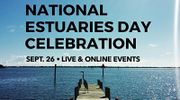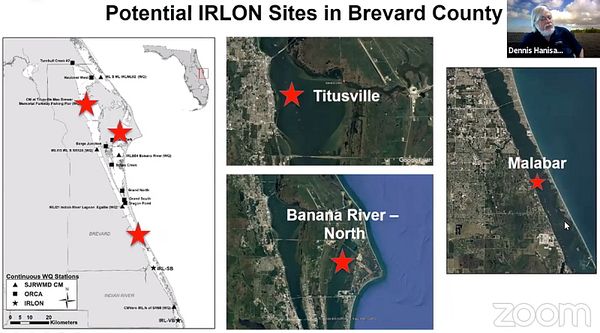Page values for "IRLNews:2020/09/27/Marine Resources Council IRL Report Card Webinar"
"News_Link" values
1 row is stored for this page| Title | Marine Resources Council IRL Report Card Webinar |
| Url | https://www.facebook.com/MarineResourcesCouncil/videos/2748339411935126 |
| Description | Marine Resources Council (MRC) celebrated National Estuary Day with a webinar featuring presentations on the Indian River Lagoon Observatory Network (IRLON) by Dr. M. Dennis Hanisak, Ph.D., and MRC's new IRL Report Card by Dr. Leesa Souto. |
| Image | |
| Region | Brevard County |
| Water_Body | Estuary |
| Location | Palm Bay |
| People | Host: Dr. Leesa Souto, Presenter: M. Dennis Hanisak |
| Access_Date | September 26, 2020 |
| Publication | MRC Webinar |
| Published_Date | September 26, 2020 |
| Publisher | Marine Resources Council |
| Publisher_Url | https://savetheirl.org/ |
| Type | Social Media |
| Social_Type | |
| Social_Name | Marine Resources Council |
| Social_Url | https://www.facebook.com/MarineResourcesCouncil/ |
| Keywords | Marine Resources Council MRC IRL Report Card Webinar |
| Topic | Restoration |
| Text_Body | On September 26, 2020, the Marine Resources Council celebrated National Estuaries Day by hosting a public webinar, where prominent IRL research scientists made presentations and answered questions on the current health of the Indian River Lagoon National Estuary. MRC Webinar PresentationsThe Indian River Lagoon Observatory Network of Environmental Sensors (IRLON): Addressing Emerging Environmental Issues in the Indian River Lagoon presented by Dr. M. Dennis Hanisak, Ph.D., Harbor Branch, Florida Atlantic University, Indian River Lagoon Observatory Director. Indian River Lagoon Observatory at FAU's Harbor Branch Research Institute in Fort Pierce, Florida uses an estuarine observation network of land/ocean biogeochemical observatory (LOBO) units and weather sensors to provide real-time, high-accuracy, and high-resolution water quality/weather data through the dedicated interactive Indian River Lagoon Observatory Network website.
Tracking the Pollution Sources of the Lagoon presented by Dr. Leesa Souto, Marine Resources Council Executive Director. Dr. Souto introduced MRC's new Indian River Lagoon Report Card, a science-based water quality rating system for the IRL. The MRC rates the lagoon's water quality based on Nitrogen and Phosphorus content, chlorophyll, turbidity, and seagrass growth. In a nutshell, human-introduced Nitrogen & Phosphorus (nutrient pollution) fuels the growth of chlorophyll (algae), which creates murky turbid water that blocks sunlight and prevents the growth of seagrass, the IRL's key indicator species. Dr. Souto revealed the 2019 Indian River Lagoon health scores with animated graphics that illustrated the IRL estuary's water quality through the years. Most IRL zones average a D grade with a 60% - 70% score, but there are many areas in fair to good condition with a 70%+ score. Unfortunately, some North IRL water bodies such as Banana River lagoon, Turnbull Creek, and Big Flounder Creek are in extremely poor health with scores less than 50%. MRC Webinar Videohttps://www.facebook.com/MarineResourcesCouncil/videos/2748339411935126 The MRC Webinar Video (1hr:19m) begins with Dr. Hanisak's presentation, and he responds to questions at 34m:00s into the video. Dr. Souto's presentation begins at 50m:14s into the webinar video. Both presenters answer questions at 1hr:05m:34s. Questions included the construction of saltwater aqueducts and the effectiveness of seagrass restoration efforts. ?'"`UNIQ--iframe-00000005-QINU`"'? |
| Poster | Admin |
| Posted | 20200927083358 |



